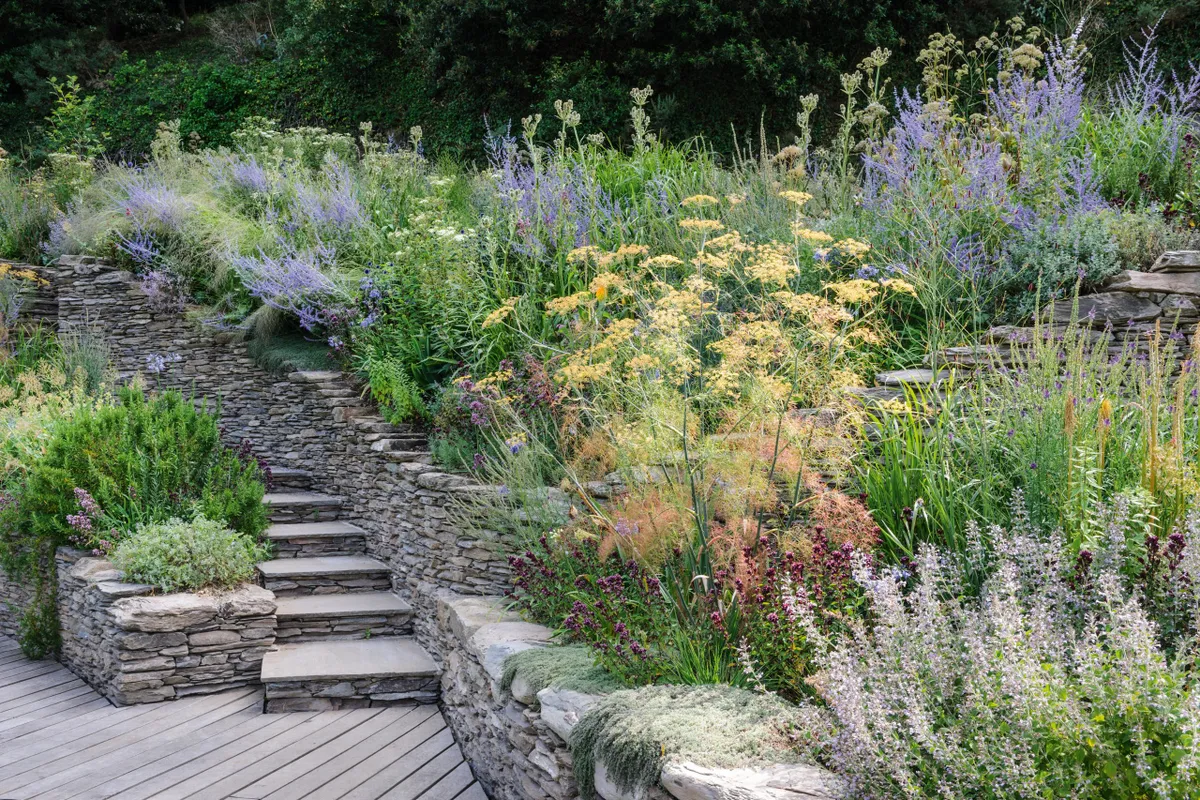Ground cover can be exceptionally helpful for stopping the advancement of toxic weeds. An important pre-requisite is the plant's ability to produce plenty of leaves, obscuring light from the soil beneath and preventing chance germination of weeds. At the close of the year, deciduous leaves may be left to mulch their own space, locking fertility into the soil, excluding light from any chance seedlings and fostering conditions conducive to reliable regrowth the following spring. Easy when plants are thriving, but where plants struggle to survive in poor ground, or with inadequate light, then sparse growth leaves dangerous scope for weeds to pierce the protective green shield.
Don't miss Chris Marchant's selection of the best ground cover plants
All successful planting is about balance – a balance between horizontal and vertical planes; small and large leaves, between solids and spaces. With the right balance, planting compositions can be atmospheric and beautiful. Consider your response to a massed bluebell wood, or a lush grassy meadow. Effectively your visual sense is panning back from minute detail to appreciate the bigger picture. It is here that ground cover can play a part in heightened enjoyment of your garden, taking you in and out of focus as seasonal highlights reach flowering perfection and then fade. The addition of grasses to a ground-cover palette adds movement and grace, with light breezes gently bending seedheads or rustling foliage.
Founding rules of planting still apply. Selected ground-cover species should suit both soil and aspect, but arranging plants in lasting compositions demands an appreciation of compatible growth habits and vigour.
Ground cover combinations for sun, shade and growing with roses
Ground cover for sun or growing with roses
Flowering roses are a joy, but roses need complementary ground cover planting to support the rest of the year. Neutral or subdued shades – silvers, creams, greens and soft blues – can be used to successfully unite a melange of mixed rose colours. Longevity of flowering is crucial and while classic Nepeta combinations are deservedly popular, they need cutting back at the end of June to stimulate a second flush. Repeat-flowering roses have much more to give at this point, so reliable alternatives are needed to take up the flowering theme.

Recommended rose ground cover plants include Calamintha nepeta, Artemisia stelleriana ‘Boughton Silver’ and Erigeron karvinskianus. Valuable evergreen detail is found in Teucrium x lucidrys and Euphorbia myrsinites, while the grasses Stipa calamagrostis and Stipa lessingiana add movement and vertical interest. The following combinations will grace any sunny open aspect – the inclusion of a grass in each extends interest beyond high summer.
Ground cover for sun or underplanting roses: combination 1
Salvia x sylvestris ‘Mainacht’, Artemisia stelleriana ‘Boughton Silver’, Allium cernuum and Stipa calamagrostis.
Ground cover combination 2
Euphorbia seguieriana, Sesleria heufleriana, Sedum telephium subsp. ruprechtii and Origanum laevigatum ‘Herrenhausen’.
Ground cover combinations for shade
Here foliage plays an important role since flowering detail is largely restricted to the spring. The following suggestions address both flower and foliage appeal to retain interest.
For light woodland edge
Teucrium scorodonia ‘Crispum’, Dryopteris erythrosora and Geranium phaeum ‘Samobor’.
For moisture retentive soils
Hosta ‘Devon Green’, Mukdenia rossii ‘Karasuba’ and Aruncus ‘Guinea Fowl’ offer a long season.
Where a strong and robust planting response is appropriate, try a carpet of Trachystemon orientalis supported on the fringes by Lunaria annua. The latter’s silver seeds will add light to the gloom of autumn when other woodland flowers are finished. As the season unfolds, woodland bulbs can form an important component of ground cover. Their urgency to flower in the early spring stealing a march on the full expansion of ground-cover leaf canopy, adding pinpoints of colour at a time when there is little else. Erythronium, Iris tuberosa, Puschkinia and Scilla all make fine early bulb choices for a lightly shaded woodland edge.
How to grow ground cover plants
Sunny outlook
Open, dry and sunny conditions support a broader range of plants if soil is open and aerated to keep microbial activity alive. Where sun is a constant, evaporation of precious moisture from the surface is reduced by the application of surface gravel or stone mulch. This also helps prevent a surface crust forming. Chance seedlings in these spaces are easily removed until the expanse of low, creeping foliage swells to precludes unwelcome interlopers.
Woodland/shade
Thorough manual cultivation of the soil with incorporation of organic material to open the texture and increase moisture retention significantly adds to success. Occasional feeding of the soil improves performance. A 5cm mulch of well-rotted manure and leaf mould (20/80 ratio) in spring will be taken down to the lower soil profile by worms, improving aeration and fertility.




